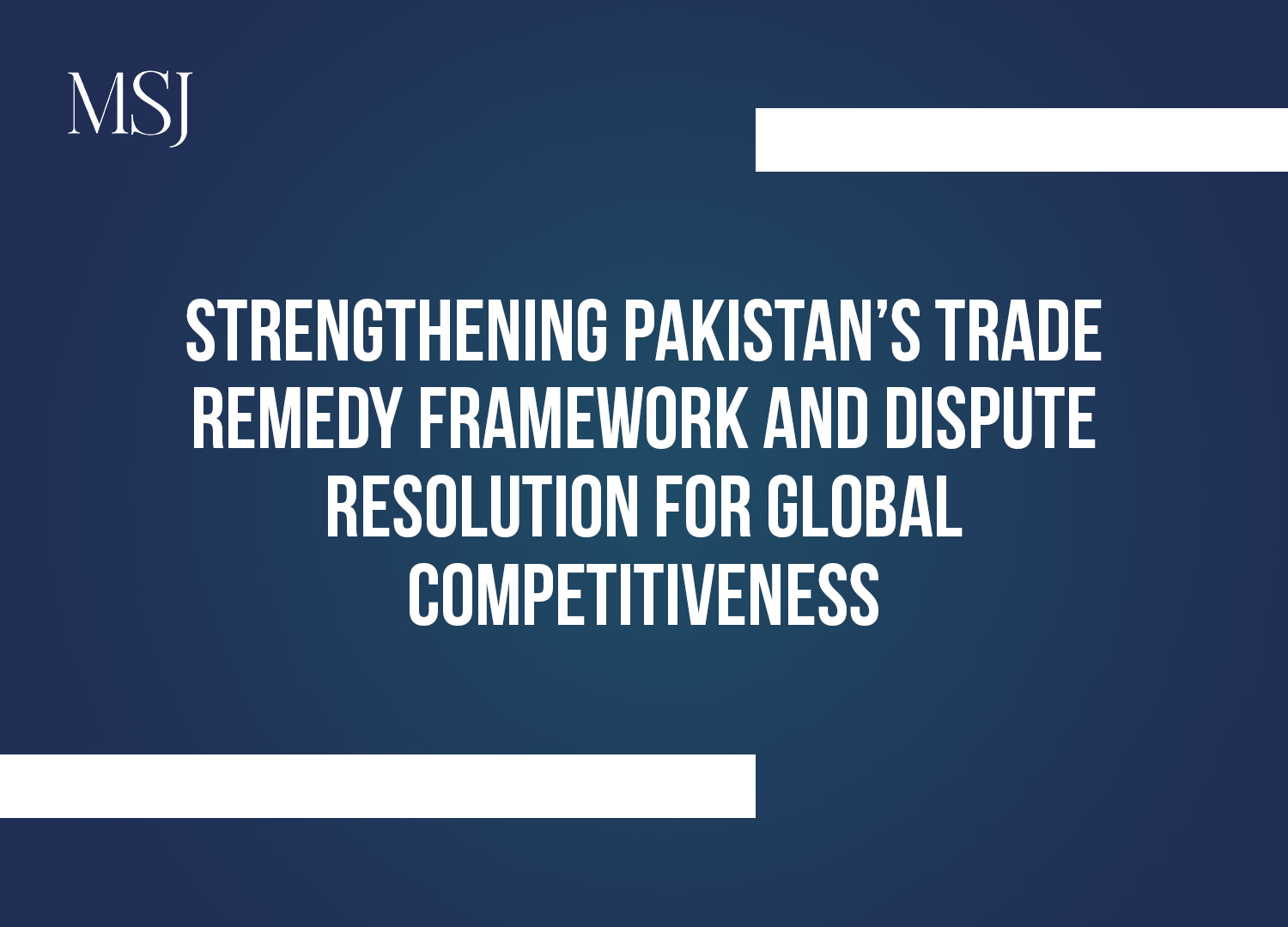Nepal ADR Week: Modernising Dispute Resolution
As a representative of Pakistan during the Nepal ADR Week in December 2024, Mian Sheraz Javaid gave an insightful keynote address and presentation on the contribution of South Asian ADR (alternative dispute resolution) institutions to the growth and trust in ADR practices over the past two decades. The theme of the event was "Modernising Dispute Resolution: The Role of ADR in Enhancing Access to Justice,” and Sheraz’s discussion was chaired by Dr. Mukti Rijal, NIAC and moderated by Ms. Nida Doon-Malla.
Through his presentation, Sheraz noted how ADR institutions in South Asia have made substantial contributions to the growth of ADR practices and the development of trust in these mechanisms. Their role has been instrumental in shaping the region’s arbitration and dispute resolution landscape, with institutions like the Chartered Institute of Arbitrators (Ciarb) playing a pivotal role in fostering ADR growth. Through training, accreditation, conferences, and international collaborations, Ciarb and similar organisations have worked tirelessly to establish high professional standards and ensure that ADR practitioners in South Asia meet global expectations. Sheraz noted that this has played a key part in enhancing the reliability of ADR processes and increasing their acceptance as effective means of dispute resolution.
ADR IN SOUTH ASIA
Sheraz emphasised how Ciarb’s efforts in South Asia, particularly through its branches in India, Sri Lanka, and Pakistan, have been essential in raising awareness about ADR practices. Ciarb's training programs have educated and accredited professionals, building a pool of qualified arbitrators and mediators who adhere to international standards. Additionally, Ciarb has worked with leading global ADR institutions like the Singapore International Arbitration Centre (SIAC) and the Hong Kong International Arbitration Centre (HKIAC), organising conferences, workshops, and seminars to exchange best practices and promote innovation in the region. These collaborations have led to the introduction of novel methods such as expedited procedures, early dismissal mechanisms, and improved case management systems. Furthermore, they have played an active role in positioning South Asia as a region capable of handling high-stakes international disputes, in line with global developments.
Another significant point of discussion was the rise of Asian arbitral institutions, which, according to the Queen Mary University of London International Arbitration Survey, are on their way to being some of the most reputable institutions in the world. According to the survey, SIAC is ranked as the second-most preferred arbitral institution globally, with Hong Kong’s HKIAC close behind. This shift signifies growing confidence in Asian arbitration institutions, which have earned their reputation through user-friendly processes, competitive fee structures, proactive case management, and consistent quality. Ciarb’s contribution to this trend is evident in its ongoing efforts to raise the standards of ADR practitioners in South Asia and promote these emerging institutions to both regional and international parties.
ADR AND THE ECONOMY
Additionally, the presentation highlighted how South Asia’s economic dynamism has also played a crucial role in the growth of ADR practices. The surge in infrastructure projects in sectors such as construction, energy, and technology has necessitated the establishment of efficient dispute resolution mechanisms. ADR, particularly arbitration, has emerged as the preferred method for resolving complex and high-value disputes, given its enforceability and ability to offer expedited solutions. Institutions like Ciarb and SIAC have been instrumental in positioning arbitration as the ideal solution for handling large-scale projects, thus aligning the region’s legal landscape with the global preference for arbitration over traditional litigation. Moreover, the cultural tendencies in South Asia, which favour non-confrontational methods of dispute resolution, align well with the values of ADR, further increasing its acceptance among businesses and individuals.
Sheraz’s presentation also noted how, in addition to the growth of arbitration institutions, the past two decades have seen a rise in investor-state dispute settlement (ISDS) cases involving Asian investors. Increased outbound investment from countries like China and Japan has resulted in a rise in intra-Asian disputes being resolved in Asian arbitration hubs. The signing of bilateral investment treaties (BITs) and the establishment of frameworks like the Singapore Mediation Convention have also facilitated the resolution of disputes through mediation as a preferred alternative to traditional ISDS methods. This has further positioned Asian arbitration centres, particularly SIAC, as hubs for international dispute resolution. For instance, in the Philip Morris v. Australia case, the arbitral tribunal chose Singapore as the seat of arbitration due to its geographical proximity to the subject matter and the parties involved, further reinforcing Singapore’s status as a global arbitration centre.
The growth of Asian arbitration institutions is reflected in the rising number of arbitral institutions in Asia, from three in the early 1990s to more than 49 by 2016. This indicates that Asia has the capacity to meet the growing demand for ADR services. The opening of the Permanent Court of Arbitration office at Maxwell Chambers and the regular hearings conducted by the International Centre for Settlement of Investment Disputures in the region further underline Asia's emergence as a global hub for arbitration. It was with Ciarb's input that the expansion of the institution, combined with the involvement of institutions such as SIAC, has been critical to this change, promoting the credibility and professionalism of ADR systems in South Asia and globally.
BENEFITS OF ADR INSTITUTIONS
Regionally, the ADR institutions have contributed to domestic growth while marketing themselves as centres for international dispute resolution. A key example of this is Singapore, which has fostered a pro-arbitration environment through legislative reforms, the creation of supportive infrastructure, and the promotion of arbitration as a vital part of its legal system. The Singapore International Arbitration Act, based on the UNCITRAL Model Law, has streamlined arbitration procedures, and the Maxwell Chambers as a dedicated dispute resolution complex has provided an up-to-date venue for arbitration and mediation. In 2023, SIAC handled a record number of cases, which demonstrated international appeal of the region as a preferred arbitration seat. The increase in the number of international cases before SIAC is an indicator of the growing confidence in Asia as a neutral and efficient venue for dispute resolution.
Including more South Asian countries in his analysis, Sheraz pointed out that China has also played a role in the expansion of ADR practices by setting up over a million People's Mediation Courts (PMCs) that handle civil disputes. These courts provide an accessible, localised method of resolving disputes, especially in rural areas, and complement the formal judicial system by alleviating court backlogs and promoting social harmony. This local approach ensures that justice remains accessible while preserving traditional dispute resolution practices. The integration of community-based ADR systems has demonstrated that ADR can work effectively in both urban and rural environments, and Ciarb's training and capacity-building efforts in these areas have been pivotal in ensuring that the local systems align with the global standards of fairness and transparency.
The role of ADR institutions extends beyond dispute resolution to ensure economic stability and communal development. As implemented in countries such as Gambia, ADR has relieved judicial backlogs and enhanced the social harmony of that state by easing court backlogs. In this respect, ADR initiatives also enable providing a collaborative approach toward settlement of disputes, hence the environment where development may actually thrive. For instance, with regards to Ukraine, privatisation and economic restructuring were eased by ADR mechanisms using the services of the so-called Ukraine Mediation Group, which clearly indicates its possible application in other fields with respect to more extensive processes of economic reform.
IMPORTANCE OF COOPERATION
Fourth, cooperation rather than competition between ADR centres and further consolidation in this realm would contribute to promoting such practices in the region. Sheraz discussed how AAMACG stands out as an example of the cooperative approach: "Cooperation, as represented by AAMACG, in enabling the sharing of knowledge among centres across different regions toward enhancing the management of complicated disputes." This approach fosters transparency, standardisation, and efficiency while guaranteeing that ADR practices are relevant, effective, and able to meet local as well as international needs.
Thus, Sheraz's address and presentation analysed how ADR institutions in South Asia significantly contributed to the growth of the last two decades. Thereby, their endeavours positioned the region as one of the world leaders in arbitration and have received increasing recognition across the world with increasing institutions. By continually strengthening their collaboration, making full transparency, and boosting good practices, ADR centres in South Asia can only become more significant actors toward shaping the future of international dispute resolution.










